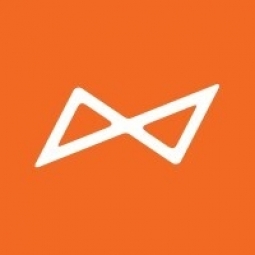Airlines Reporting Corporation: Leveraging IoT for Improved Data Accessibility and Product Development

Technology Category
- Cybersecurity & Privacy - Identity & Authentication Management
- Sensors - Environmental Sensors
Applicable Industries
- Education
- Equipment & Machinery
Applicable Functions
- Product Research & Development
- Quality Assurance
Use Cases
- Machine to Machine Payments
- Visual Quality Detection
Services
- Cloud Planning, Design & Implementation Services
- Testing & Certification
About The Customer
Airlines Reporting Corporation (ARC) is a small but significant player in the travel industry, acting as an intermediary between airlines and travel companies such as Expedia. They handle transactions including refunds, exchanges, and cancellations. In recent years, they have strategically positioned themselves as a data and analytics company, selling business intelligence and other data products to airlines, travel management companies, and other third-parties. ARC develops their data products using aggregated data from their settlement transactions and from the International Air Transport Association (IATA). In 2019, ARC managed more than $97.4 billion in transactions between airlines and travel agencies, representing more than 302 million passenger trips. Their membership includes more than 200 airlines and 9,400 travel agencies, and they have 13,000 points of sale.
The Challenge
Airlines Reporting Corporation (ARC), a key intermediary in the travel industry, had accumulated a massive amount of data over its 50 years of operation. This data was stored in on-premises servers and was largely siloed by the company’s seven business domains. The company wanted to bring new products to market faster by making data more accessible across the business. However, ARC's existing product development processes relied heavily on the tribal knowledge of domain experts, which created bottlenecks and risked loss of expertise when employees left the company. In 2018, ARC decided to embark on a digital transformation initiative, which included modernizing business processes and migrating all their data to an AWS S3 Data Lake and Snowflake Data Cloud. The goal was to make data more accessible across domains and reduce reliance on individual expertise during product development. To ensure that employees could find the data they needed, ARC sought to implement a data catalog solution for their migrated cloud data.
The Solution
After evaluating several data catalog options, ARC chose the Alation Data Catalog. Alation's intuitive, refined, and mature user interface, along with features like Trust Flags, Compose, and data profiling, made it the ideal choice for ARC. The company is curating and cataloging their data in Alation as they migrate it to the cloud. Alation makes the data curation, cataloging, and governance process simple, even for a small company like ARC. A small group of data stewards – experts in their domain data – holds responsibility for data curation and cataloging in Alation. To help users from the wider company better understand where the data is and how to use it, ARC is encouraging the adoption of Alation as the one-stop shop for data access and analytics. ARC also implemented the manual lineage function in Alation to trace the connections more easily from the S3 data to Snowflake, and ultimately to Tableau for reporting and analysis.
Operational Impact
Quantitative Benefit

Case Study missing?
Start adding your own!
Register with your work email and create a new case study profile for your business.
Related Case Studies.

Case Study
Smart Water Filtration Systems
Before working with Ayla Networks, Ozner was already using cloud connectivity to identify and solve water-filtration system malfunctions as well as to monitor filter cartridges for replacements.But, in June 2015, Ozner executives talked with Ayla about how the company might further improve its water systems with IoT technology. They liked what they heard from Ayla, but the executives needed to be sure that Ayla’s Agile IoT Platform provided the security and reliability Ozner required.

Case Study
IoT enabled Fleet Management with MindSphere
In view of growing competition, Gämmerler had a strong need to remain competitive via process optimization, reliability and gentle handling of printed products, even at highest press speeds. In addition, a digitalization initiative also included developing a key differentiation via data-driven services offers.

Case Study
Predictive Maintenance for Industrial Chillers
For global leaders in the industrial chiller manufacturing, reliability of the entire production process is of the utmost importance. Chillers are refrigeration systems that produce ice water to provide cooling for a process or industrial application. One of those leaders sought a way to respond to asset performance issues, even before they occur. The intelligence to guarantee maximum reliability of cooling devices is embedded (pre-alarming). A pre-alarming phase means that the cooling device still works, but symptoms may appear, telling manufacturers that a failure is likely to occur in the near future. Chillers who are not internet connected at that moment, provide little insight in this pre-alarming phase.

Case Study
Premium Appliance Producer Innovates with Internet of Everything
Sub-Zero faced the largest product launch in the company’s history:It wanted to launch 60 new products as scheduled while simultaneously opening a new “greenfield” production facility, yet still adhering to stringent quality requirements and manage issues from new supply-chain partners. A the same time, it wanted to increase staff productivity time and collaboration while reducing travel and costs.

Case Study
Integration of PLC with IoT for Bosch Rexroth
The application arises from the need to monitor and anticipate the problems of one or more machines managed by a PLC. These problems, often resulting from the accumulation over time of small discrepancies, require, when they occur, ex post technical operations maintenance.

Case Study
Data Gathering Solution for Joy Global
Joy Global's existing business processes required customers to work through an unstable legacy system to collect mass volumes of data. With inadequate processes and tools, field level analytics were not sufficient to properly inform business decisions.






